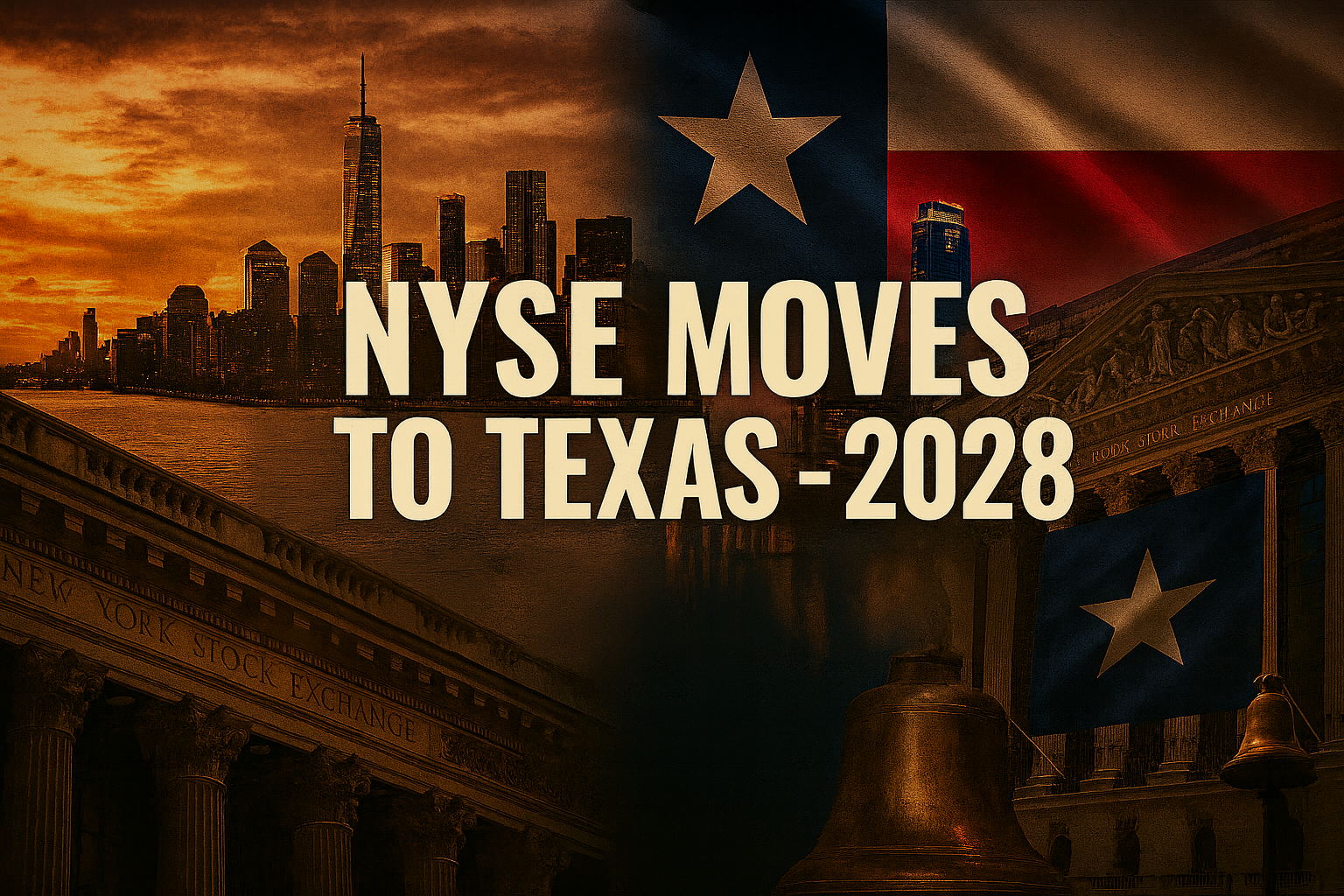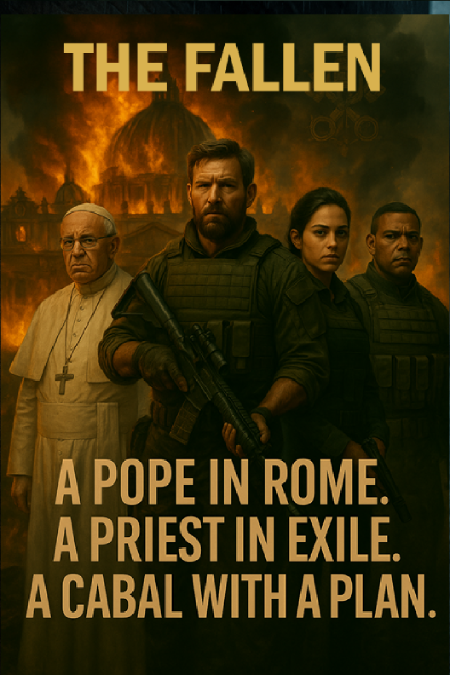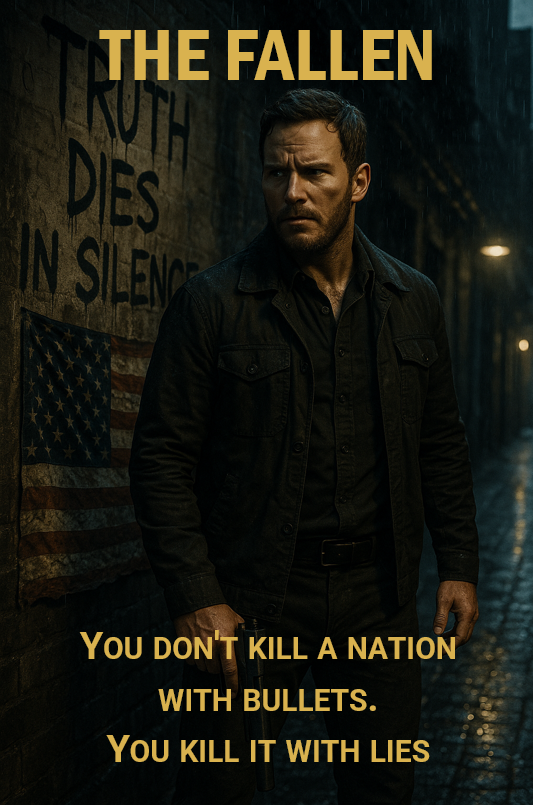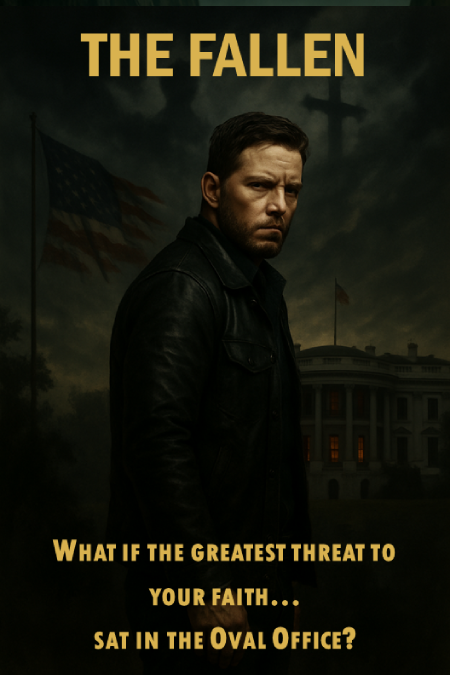Immediately after the election in New York City, my boss walked into my office and closed the door. He said, “You’re moving the New York Stock Exchange to Texas—and we start trading in 2028.” He left as suddenly as he had arrived. Those of us working on Wall Street in the Financial District of Lower Manhattan, New York City, understood this was a possibility, but it still felt surreal. How could friends and neighbors actually vote into office an extreme socialist as the mayor of our city, the Republic’s epicenter of capitalism? I felt the weight of 233 years of tradition settle heavily on my shoulders. The Exchange isn’t just a building; it’s a bell that has tolled through wars, recessions, and recoveries. It’s the sound of American confidence. But confidence is mobile—and so is capital. New York City had just chosen an extreme socialist, anti-business path: higher taxes, louder hostility toward enterprise, and a regulatory climate that treated success like a sin. If we wanted the heartbeat of free markets to keep its rhythm, we had to move it where it could breathe.
This is the story of the key steps I took to make it happen.
Step 1 – Frame the Mission Around Confidence, Not Politics
Before a single filing, I defined the goal with one word: confidence. Confidence is the true currency that cities trade on. If the bell ever rang from Austin, the shockwaves would be cultural before they were financial: listings follow talent, capital follows clarity, and startups incorporate where they’re welcomed. I made that our north star.
Inside the organization, I told our leaders: “We’re not abandoning New York; we’re modernizing America’s market infrastructure so it can’t be held hostage by a city that forgot how it got rich.” That framing aligned our board, our listed companies, and our public message.
Step 2 – Create the Legal Bridge: Incorporate in Texas
You don’t “pack up” a national securities exchange. Instead, you construct a legal bridge and cross it. The first step was forming a Texas entity capable of handling the Exchange’s operations while maintaining our SEC status and brand. We created NYSE Texas, LLC as a fully controlled subsidiary, drafted a conversion-and-merger plan, and amended our operating documents to establish a principal place of business in Texas while keeping the legacy brand and heritage assets in New York.
Key moves I made:
- Texas Formation & Governance: Filed the Texas LLC, designated a registered agent, adopted Texas governing law for the new subsidiary, and aligned manager/member rights to match the existing structure.
- Conversion/Merger Mechanics: Developed two options—(A) statutory conversion of the operating entity to Texas law, or (B) merger of the legacy entity into the Texas subsidiary—giving us flexibility if regulators pref erred one approach.
- Contract & Lease Audit: Cataloged every contract related to New York jurisdiction—leases, telecom, data center colos, vendor MSAs—and negotiated assignability or parallel replacements in Texas.
Step 3 – Sit With the Referees: SEC, Treasury, FINRA, DTCC
Our next step was diplomacy with those who could say “no.” I personally led pre-filing consultations with the SEC’s Division of Trading & Markets, briefed the Treasury on systemic resilience, and met with FINRA and DTCC to discuss supervisory, clearing, and settlement continuity. I didn’t ask for a rubber stamp; I asked for a checklist.
What they asked for, I delivered:
- Form 19b-4 Rule Filing: A detailed submission covering the relocation of primary operations, amendments to our governing documents, and any changes to rule language.
- Regulation SCI Plan: A comprehensive systems compliance package demonstrating capacity, integrity, cybersecurity controls, penetration testing, and incident response across both states.
- Continuity & Cutover Protocols: A parallel operations plan with clear metrics—latency, throughput, failover times—and a multi-weekend mock cutover that can be repeated on demand.
- Market Surveillance & Enforcement: Assurance that our surveillance, disciplinary, and member oversight functions will remain effective and exam-ready from day one in Texas.
By the time we were done, the questions shifted from “Why?” to “When?”
Step 4 – Choose the Ground: Austin as the New Financial Frontier
Texas didn’t just welcome us—it competed for us. I led a site selection sprint that weighed fiber routes, power redundancy, hazard profiles, cost per square foot, and talent density. Austin won for three reasons:
- Central Time, National Reach: It keeps overlap with both coasts, ideal for market hours and global connectivity.
- Tech Spine: Proximity to a deep engineering base and a growing fintech ecosystem.
- Infrastructure and Culture: New construction with purpose-built power and cooling, plus a civic culture that sees enterprise as a public good.
We secured a multi-acre campus with an exchange-grade trading hall, a Tier IV-adjacent data core, and dedicated dark fiber to Dallas, Atlanta, and major carrier hotels. The state accelerated permitting; the city fast-tracked utilities. I signed a community benefits pact to fund workforce pipelines for Texans entering market operations and cybersecurity.
Step 5 – Build the Nerve Center: Technology Before Tradition
The marble columns could wait. Milliseconds couldn’t. I greenlit a dual-core architecture:
- Active-Active Data Centers: Austin as the primary with Dallas as a hot–hot peer; Atlanta as a tertiary recovery node—each capable of handling the entire national book without human intervention.
- Ultra-Low Latency Fabric: New optical paths to carrier-neutral facilities, with round-trip targets set below legacy benchmarks. Every microsecond we saved proved that the move was a genuine performance upgrade, not just cosmetic.
- Surveillance & Market Integrity: Co-located surveillance engines and machine-learning anomaly detection tuned to the new topology, validated through parallel replay of historic market days.
- Member Readiness: I launched a nationwide member-testing program—covering conformance, certification, and staged volume drills—so every broker-dealer could attest to readiness months before go-live.
Tradition matters. But trust is built on throughput, uptime, and fairness. We made those unassailable.
Step 6 – De-Risk the Optics: Preserve a Ceremonial Wall Street
Markets operate on math; people seek meaning. To reduce political backlash and reassure global audiences, I maintained a ceremonial floor in Lower Manhattan for bell events, media, and milestone listings. It wasn’t a bait-and-switch; it was a sign of continuity. The brand—New York Stock Exchange—remains a national asset. The operational core simply resides where enterprise is valued.
Meanwhile, our public narrative never used the word “exit.” Instead, it focused on “expansion south,” “modernization,” and “resilience.” When I saw that exact language echoed in national headlines, I knew the communication plan had succeeded.
Step 7 – Align the Stakeholders: Congress, States, and the Street
I built a coalition rather than a controversy.
- Congressional Briefings: Quiet, bipartisan sessions with House Financial Services and Senate Banking staff to frame the move as a matter of systemic resilience, not deregulation.
- State Partnerships: Agreements with Texas on training grants, cyber R&D credits, and infrastructure support—along with transparency conditions to prevent “back-room deal” narratives.
- Issuer & Investor Outreach: Town halls with CFOs, general counsels, and institutional investors to review our timeline, test results, and listing-day experience in Austin.
Stakeholders don’t fear change; they fear surprises. I refused to surprise anyone.
Step 8 – Write the Playbook: Timeline to a 2028 Opening Bell
I set one date in stone: January 2028 for live trading in Texas. Then I worked backward.
- 2025–Mid 2026 | Legal & Regulatory – Texas entity formed, operating documents amended, Form 19b-4 filed; SEC, Treasury, FINRA, DTCC reviews; public comment managed; Reg SCI validations underway.
- Mid 2026–Mid 2027 | Build & Integrate – Campus construction to substantial completion; data core energized; dark fiber lit; member testing windows open; parallel operations commence; surveillance tuning.
- Late 2027 | Mock Cutovers & Sign-Offs – Three full “dress rehearsal” weekends, with measured KPIs equal to or better than legacy; contingency runbooks exercised with regulators on site.
- January 2028 | Live – Bell rings in Austin. The ceremonial floor in New York hosts the legacy broadcast, symbol intact, engine upgraded.
Step 9 – Anticipate the Crossfire: Risks and How I Answered Them
- “This will spook the markets.” We published performance metrics weekly during testing and invited third-party audits. Confidence grew because transparency increased.
- “New York will fight you.” I never fought New York; I respected it. We maintained its symbolism and history while avoiding making our critical infrastructure depend on a single city’s politics and declining cultural environment.
- “Regulators will stall you.” Regulators stall when you’re vague. We were specific, measurable, and early. We brought solutions, not headlines.
- “Members won’t follow.” Members follow speed, reliability, and listings. We offered all three.
Step 10 – What Moving the Bell Really Means
The Exchange has always been the moral and economic heart of American capitalism. If that bell rings in Austin, it won’t mean we’ve left our soul in Lower Manhattan. It will mean America has kept faith with the people who build, risk, and create. We will have proven that free markets are bigger than any one zip code—and that when a city raises the price of enterprise and diminishes the dignity of work, enterprise and dignity will simply move.
When my boss assigned me this task, he said the political climate forced our hand. He was right. New York chose a path that penalizes success and celebrates chaos. Texas chose one that embraces innovation, rewards prudence, and respects the freedom that makes markets possible. My role wasn’t to judge; it was to keep the bell ringing where confidence can flourish.
On opening day 2028, I’ll stand on a trading floor built for the next hundred years. The cameras will pan the room; orders will fill in microseconds; and somewhere, far to the northeast, the old stone facades will catch the morning light. The name will still be New York Stock Exchange. But the future of American finance will be ringing—loud and clear—from Texas.




